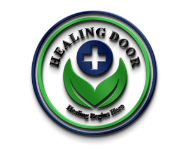The 13 Principles of Drug Addiction Treatment and strong recovery
Addiction is a complex but treatable disease that affects the brain functioning and behaviors of the individual. Drug abuse alters the brain’s structure and function, resulting in changes that persist for a long time after drug use has been stopped.
What are the 13 Principles of Drug Addiction Treatment and strong recovery?

This might clarify why drug abusers are in danger of relapse even after significant stretches of restraint and notwithstanding the possibly wrecking results. Here are the principles for addiction treatment and to stay in Recovery.
1. The first and foremost thing is, No single treatment is appropriate for all the patients. Matching the treatment settings, the interventions, and the services to each patient’s problems and needs is critical.
2. Treatment needs to be readily available. Because drug addicts may be uncertain about entering treatment, taking advantage of available services at the moment people are ready for treatment is critical. Treatment applicants can be lost if treatment is not immediately available and readily accessible.
3. Effective treatment takes care of different requirements of the individual, in addition to their medication use. Therapy should address the singular’s medication use and related clinical, mental, social, profound, professional, and legitimate issues. Treatment should be suitable to the patient’s age, orientation, nationality, and culture. Treatment needs to be flexible and to provide ongoing assessments of the patient’s needs, which may change during treatment.
4. Recovery from drug addiction is a long-term process and frequently requires multiple episodes of treatment. As with other chronic illnesses, relapses to drug abuse can occur and should signal a need for treatment to be reinstated or adjusted. Because individuals often leave treatment prematurely, programs should include strategies to engage and keep patients in treatment.
5. Remaining in treatment for a sufficient timeframe is basic for treatment viability. The time relies upon a patient’s requirements. For most patients, the limit of critical improvement is reached at around 90 days in treatment. Extra treatment can deliver further advancement. Projects ought to incorporate systems to keep patients from leaving treatment rashly.
6. Individual and group treatment meetings and other conduct treatments are basic parts of the compelling treatment for fixation. In treatment, patients address inspiration, assemble abilities to oppose drug use, supplant drug-utilizing exercises with useful and remunerating nondrug-utilizing exercises, and further develop critical thinking capacities. Conduct treatment additionally works with the relational connections.
7. Medications are a significant component of treatment for some patients, particularly when joined with advising and other social treatments. Methadone and Levo-alpha-acetylmethadol (LAAM) help people dependent on sedatives balance out their lives and decrease their medication use. Naltrexone is powerful for some, sedative addicts and a few patients with co-happening liquor reliance. Nicotine fixes or gum, or oral medicine, like bupropion, can help people dependent on nicotine.
8. Dependent or medication manhandling people with coinciding mental issues ought to have the two issues treated in a coordinated manner. Since these issues regularly happen in similar individuals, patients introduced for one condition ought to be evaluated and treated for the other.
9. Clinical detoxification is just the principal phase of rehab treatment and without anyone else does barely anything to change long-haul drug use. Clinical detoxification deals with the intense actual side effects of withdrawal. For certain people, it is an antecedent to compelling illicit drug use treatment.
10. Treatment does not need to be voluntary to be effective. Assents or temptations in the family, work setting, or law enforcement framework can altogether increment treatment section, maintenance, and achievement.
11. Conceivable medication use during treatment should be checked persistently. Observing a patient’s medication and liquor use during treatment, for example, through urinalysis, can assist the patient with enduring desires to utilize drugs. Such checking additionally can give early proof of medication use so treatment can be changed.
12. Treatment programs ought to give appraisal to HIV/AIDS, hepatitis B and C, tuberculosis, and other irresistible illnesses, and guidance to help patients adjust or change practices that place them or others in danger of contamination. Advising can assist patients with keeping away from high-hazard conduct and assist with peopling who are as of now tainted deal with their disease.
Recovery from chronic drug use can be a drawn-out process and often requires various episodes of therapy. Likewise with other constant sicknesses, backslides to sedate use can happen during or after effective therapy episodes. Interest in self-improvement support programs during and following treatment frequently keeps up with forbearance.
For More Information Contact us.
